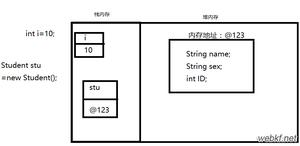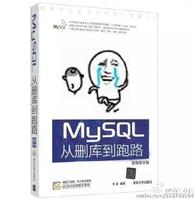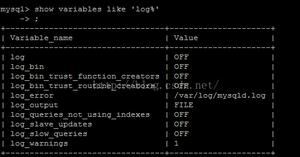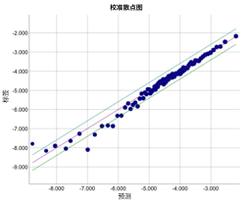数据绑定动态数据
我需要绑定到GridControl的一组“动态数据”。到目前为止,我一直在使用标准的DataTable类,该类是System.Data命名空间的一部分。这个工作很好,但是有人告诉我我不能使用它,因为它对于客户端和服务器之间的网络序列化来说太重了。
因此,我认为我可以轻松地复制DataTable类的“精简版本”,只需使用一种类型即可,List<Dictionary<string,
object>>其中List表示行的集合,每个Dictionary表示一行,其中列名和值作为KeyValuePair类型。我可以将Grid设置为具有列DataField属性,以匹配Dictionary中的键的属性(就像我为DataTable的列名所做的那样)。
但是做完之后
gridControl.DataSource = table;gridControl.RefreshDataSource();
网格没有数据…
我想我需要实施IEnumerator-在此方面的任何帮助将不胜感激!
示例调用代码如下所示:
var table = new List<Dictionary<string,object>>();var row = new Dictionary<string, object>
{
{"Field1", "Data1"},
{"Field2", "Data2"},
{"Field3", "Data3"}
};
table.Add(row);
gridControl1.DataSource = table;
gridControl1.RefreshDataSource();
回答:
欢迎来到System.ComponentModel的美好世界。.NET的这个黑暗角落非常强大,但非常复杂。
谨防 除非您有很多时间-
可以按照自己喜欢的任何机制简单地对其进行序列化,然后将其重新补水到DataTable每个末端,这可能会做得很好…接下来的内容并不适合胆小的人;-p
首先-数据绑定(用于表)对 列表 (IList/
)起作用IListSource-因此List<T>应该没问题(编辑:我误读了一些内容)。但这并不能理解您的词典实际上是列…
要使类型假装具有列,您需要使用自定义PropertyDescriptor实现。有多种方法可以执行此操作,具体取决于列定义是否始终相同(但在运行时确定,即可能由config确定),或者是否每次使用都会更改(例如每个DataTable实例如何具有不同的列)。
对于“每个实例”的定制,你需要看一下ITypedList-这兽(中实现 除了
要IList)有呈现表格数据属性的好玩的事......但它并不孤单:
对于“每种类型”定制,您可以看一下TypeDescriptionProvider-这可以为类建议动态属性…
…或您可以实现ICustomTypeDescriptor-但这仅在 少数情况下使用(用于列表)(对象索引器(public object
this[int index] {get;}“)和绑定时列表中至少有一行)。(此接口非常有用绑定离散对象时-即不列出)。
实现ITypedList并提供PropertyDescriptor模型是一项艰苦的工作……因此,它只是偶尔执行。我对此相当熟悉,但我不会只是为了笑而已…
这是一个
实现(所有列都是字符串;没有通知(通过描述符),没有验证(IDataErrorInfo),没有转换(TypeConverter),没有其他列表支持(IBindingList/
IBindingListView),没有抽象(IListSource),没有其他其他元数据/属性,等等):
using System.ComponentModel;using System.Collections.Generic;
using System;
using System.Windows.Forms;
static class Program
{
[STAThread]
static void Main()
{
Application.EnableVisualStyles();
PropertyBagList list = new PropertyBagList();
list.Columns.Add("Foo");
list.Columns.Add("Bar");
list.Add("abc", "def");
list.Add("ghi", "jkl");
list.Add("mno", "pqr");
Application.Run(new Form {
Controls = {
new DataGridView {
Dock = DockStyle.Fill,
DataSource = list
}
}
});
}
}
class PropertyBagList : List<PropertyBag>, ITypedList
{
public PropertyBag Add(params string[] args)
{
if (args == null) throw new ArgumentNullException("args");
if (args.Length != Columns.Count) throw new ArgumentException("args");
PropertyBag bag = new PropertyBag();
for (int i = 0; i < args.Length; i++)
{
bag[Columns[i]] = args[i];
}
Add(bag);
return bag;
}
public PropertyBagList() { Columns = new List<string>(); }
public List<string> Columns { get; private set; }
PropertyDescriptorCollection ITypedList.GetItemProperties(PropertyDescriptor[] listAccessors)
{
if(listAccessors == null || listAccessors.Length == 0)
{
PropertyDescriptor[] props = new PropertyDescriptor[Columns.Count];
for(int i = 0 ; i < props.Length ; i++)
{
props[i] = new PropertyBagPropertyDescriptor(Columns[i]);
}
return new PropertyDescriptorCollection(props, true);
}
throw new NotImplementedException("Relations not implemented");
}
string ITypedList.GetListName(PropertyDescriptor[] listAccessors)
{
return "Foo";
}
}
class PropertyBagPropertyDescriptor : PropertyDescriptor
{
public PropertyBagPropertyDescriptor(string name) : base(name, null) { }
public override object GetValue(object component)
{
return ((PropertyBag)component)[Name];
}
public override void SetValue(object component, object value)
{
((PropertyBag)component)[Name] = (string)value;
}
public override void ResetValue(object component)
{
((PropertyBag)component)[Name] = null;
}
public override bool CanResetValue(object component)
{
return true;
}
public override bool ShouldSerializeValue(object component)
{
return ((PropertyBag)component)[Name] != null;
}
public override Type PropertyType
{
get { return typeof(string); }
}
public override bool IsReadOnly
{
get { return false; }
}
public override Type ComponentType
{
get { return typeof(PropertyBag); }
}
}
class PropertyBag
{
private readonly Dictionary<string, string> values
= new Dictionary<string, string>();
public string this[string key]
{
get
{
string value;
values.TryGetValue(key, out value);
return value;
}
set
{
if (value == null) values.Remove(key);
else values[key] = value;
}
}
}
以上是 数据绑定动态数据 的全部内容, 来源链接: utcz.com/qa/403357.html








